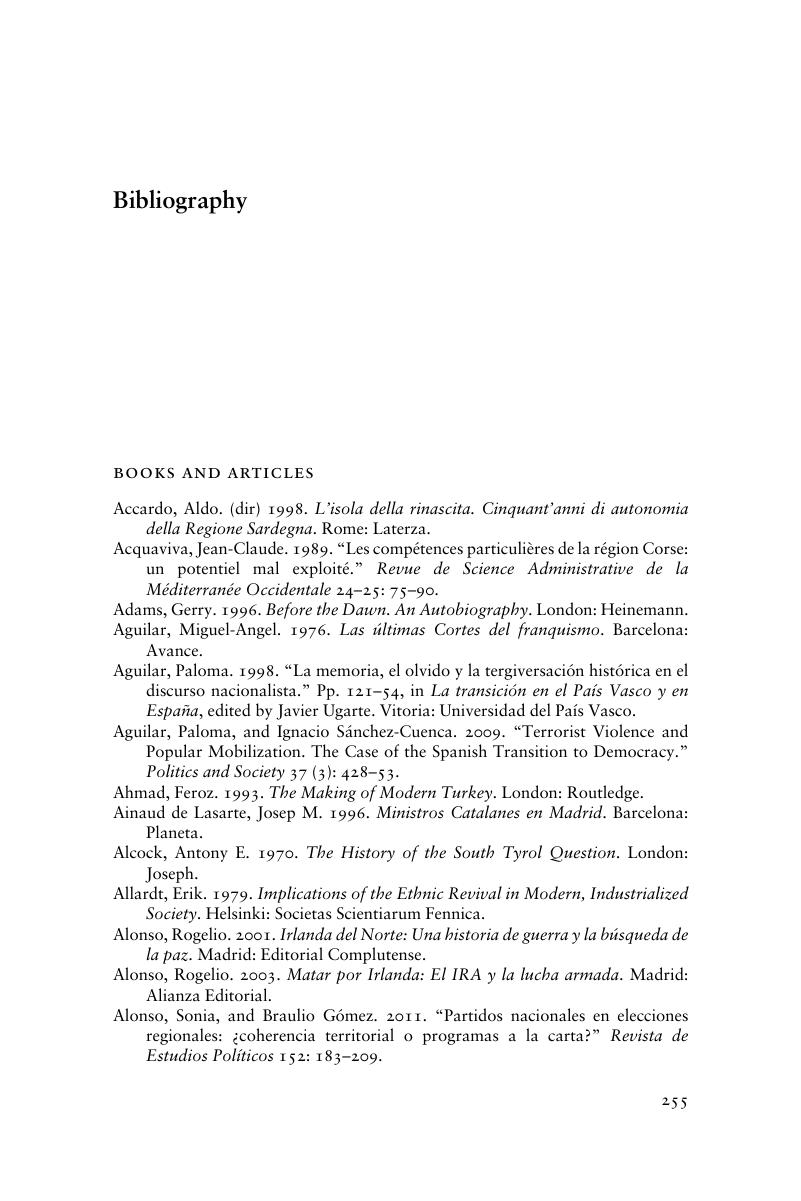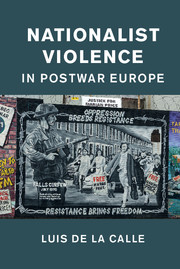Book contents
- Nationalist Violence in Postwar Europe
- Series page
- Nationalist Violence in Postwar Europe
- Copyright page
- Dedication
- Contents
- Book part
- 1 Introduction
- 2 The argument
- 3 An empirical approach to nationalist violence in postwar Western Europe
- 4 The Basque Country vs. Catalonia: prior mobilization and differences in responsiveness
- 5 Northern Ireland vs. Wales: the power of institutions
- 6 Corsica vs. Sardinia: prior autonomy and differences in responsiveness
- 7 Conclusions, limitations, and extensions
- Book part
- Bibliography
- Index
- References
Bibliography
Published online by Cambridge University Press: 05 August 2015
- Nationalist Violence in Postwar Europe
- Series page
- Nationalist Violence in Postwar Europe
- Copyright page
- Dedication
- Contents
- Book part
- 1 Introduction
- 2 The argument
- 3 An empirical approach to nationalist violence in postwar Western Europe
- 4 The Basque Country vs. Catalonia: prior mobilization and differences in responsiveness
- 5 Northern Ireland vs. Wales: the power of institutions
- 6 Corsica vs. Sardinia: prior autonomy and differences in responsiveness
- 7 Conclusions, limitations, and extensions
- Book part
- Bibliography
- Index
- References
Summary

- Type
- Chapter
- Information
- Nationalist Violence in Postwar Europe , pp. 255 - 274Publisher: Cambridge University PressPrint publication year: 2015



